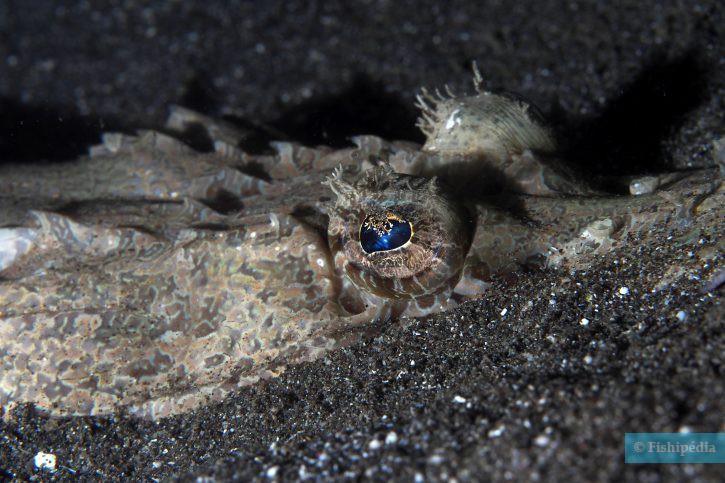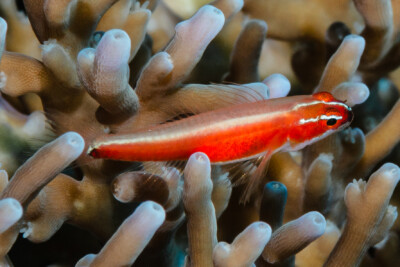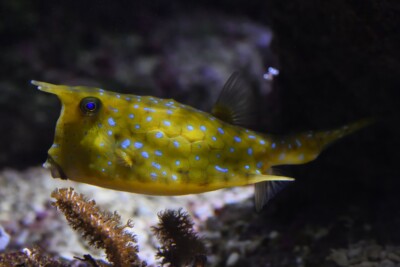crocodile fish
| Family | Platycephalidae |
|---|---|
| Genus | Cymbacephalus |
| IUCN category (World) | LC |


Introduction
Cymbacephalus beauforti, commonly known as crocodile fish, is a salt water fish from the Indonesian seas.
This sheet is currently being prepared. The texts currently proposed come from our data model or are being drafted. To request priority for this content, you can write to us HERE.
Who is it?
Morphology
-
Average size35 cm
-
Maximum size50 cm
-
ShapeRectangular
-
Patternmottling
-
Average size35 cm
-
Maximum size50 cm
-
ShapeRectangular
-
Patternmottling
How to recognize This fish ?
The crocodile fish measures between 35 and 50 cm. This fish is bicolore with a predominantly marron and beige body. The also has marron mottling.
Behaviour & Life cycle
-
dietcarnivorous
-
Sociabilitysolitary
-
territorialNo
-
Way of livingnocturnal
The crocodile fish hunts in the stalk and is one of the predators of its biotope. Opportunistic, it does not hesitate to attack any smaller animal nearby.
The crocodile fish is a fish solitary naturally found on the bottom. This species is carnivorous . This fish lives mainly at night. Usually, it leaves its hiding place and starts to be active once it gets dark.
Although the crocodile fish is non-territorial, it is sometimes aggressive towards other species.
Reproduction
-
Reproductionovipare
The crocodile fish is a fish ovipare.
Harmless species
This species does not represent any particular threats to humans when encountered in its natural environment.
Origin and distribution
What is its habitat?
Natural environment characteristics
-
Temperature28 - 29 °C
-
Depth1 - 12 m
Biotope presentation
The crocodile fish is most often found at a depth between 1m and 12m. However, it is not impossible to find this species at other depths.
Species of the same biotope
To go further
Sources & Contributions
Participation & Validation
The Fishipedia team and specialist contributors are committed to providing high-quality content. However, although the information comes from scientific sources or testimonials from specialists, the cards may contain inaccuracies.

Adrien Falzon
Translation
Translation done with the valuable contribution of our translators, who make this information available to a wider audience. We sincerely thank them for their commitment.
Scientific partners
Species of the same biotope






















